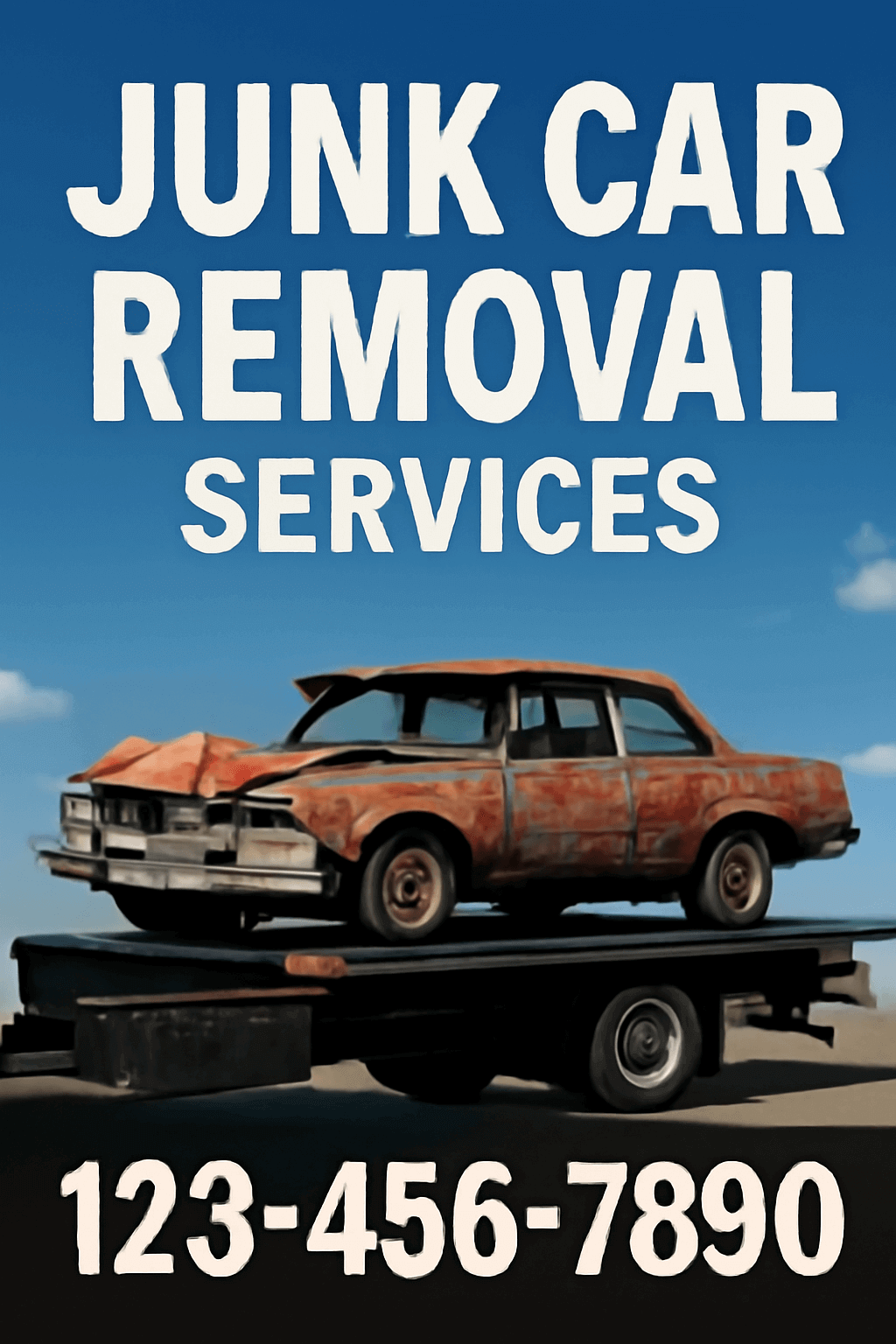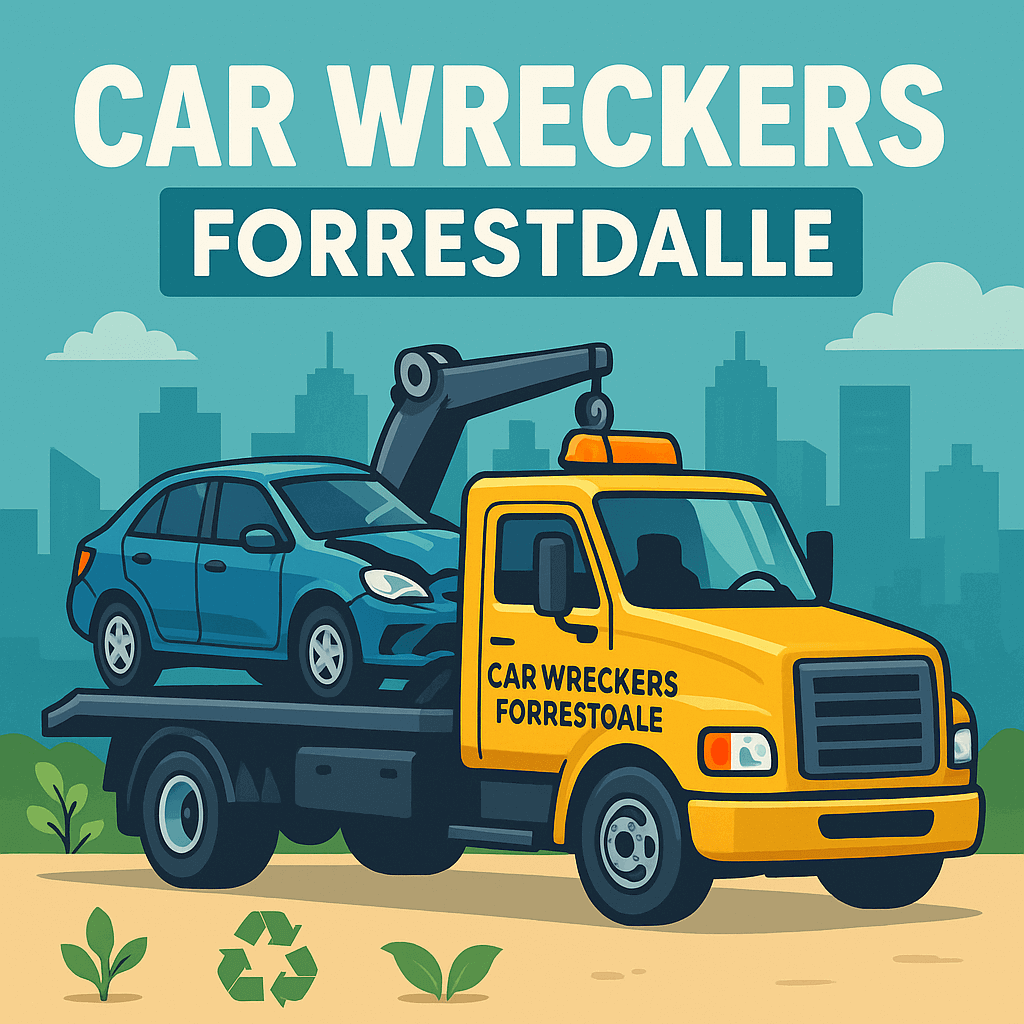The Economic and Environmental Impact of Junk Car Removal Services

In an industry surging past a $30 billion valuation globally, the economic impact of junk car removal services is undeniable. By providing ‘cash for cars’ options, this sector not only promotes fiscal liquidity but also significantly boosts local economies. “The ripple effect extends to job creation and money circulation,” shares an industry expert on Quora, highlighting the sector’s role in economic benefits. Additionally, this burgeoning market is witnessing a 3.5% annual growth, propelled by increasing consumer awareness and fluctuations in metal prices, positioning it as a pivotal player in both primary and secondary markets.
The environmental benefits are equally compelling. Recycling junk cars conserves precious resources, as noted by a Reddit community member: “Proper car disposal reduces pollution and saves 85 million barrels of oil each year.” The remarkable process of recycling ensures that about 75% of a vehicle is repurposable, significantly reducing carbon footprints and promoting sustainability. Thus, choosing these services not only generates tangible economic returns but also aligns with eco-friendly practices, appealing to both fiscal and environmental advocates.
Economic Benefits
Junk car removal services provide notable economic benefits by offering ‘cash for cars’ and stimulating market growth. These services inject liquidity into local economies, facilitating job creation and economic circulation. The industry is valued at over $30 billion globally and continues to expand at a rate of 3.5% annually. By transforming old vehicles into cash, it supports both primary and secondary markets, ultimately contributing to revenue generation and financial stability in communities.
Environmental Impact
- Recycling cars reduces pollution and environmental footprints significantly by cutting down on waste.
- This eco-friendly practice conserves vital resources, saving 85 million barrels of oil annually.
- Proper car disposal through recycling lowers carbon emissions and promotes sustainable resource management.
Cash for Cars
- Transform your old vehicle into cash quickly and efficiently by leveraging its scrap value and components.
- Average payouts for junk cars range from $100-$600, varying based on the model and current metal market rates.
- Selling junk cars provides a financial opportunity to earn from non-operable or unwanted vehicles.
Convenience and Time-Saving
Junk car removal services offer unparalleled convenience and time-saving benefits through their streamlined processes. With free pick-up services, these agencies alleviate the hassles of arranging transportation for your old vehicle. As a result, they save customers not only effort but also valuable time. Notably, about 65% of these services provide complimentary towing, illustrating the commitment to customer convenience and service efficiency. The straightforward procedure allows consumers to focus on other tasks, knowing their vehicle will be promptly removed with minimal effort on their part.
Resource Recovery
- Junk cars are a valuable source of recoverable materials. Approximately 75% of an end-of-life vehicle can be recycled, according to [Recycling Today](https://www.recyclingtoday.com). Metals, including steel and aluminum, are reprocessed into new products, contributing significantly to reducing the demand for mining new materials.
- The automotive recycling industry also facilitates the recovery of non-metal components such as plastics and oils. These materials are reused or processed into useful products, supporting the principles of a circular economy where resources are continually repurposed.
- Beyond raw materials, certain car parts are refurbished and re-sold, providing an economic alternative for consumers needing affordable auto parts. This not only extends the lifecycle of these parts but also lessens waste, fostering both economic and environmental benefits.
Vehicle Categories and Values
| Vehicle Type | Estimated Scrap Value | Market Insights |
|---|---|---|
| Sedans | $100 – $400 | Common and affordable, sedans constitute 55% of junkyard stock, offering moderate scrap value. |
| SUVs | $300 – $600 | With higher metal content, SUVs have a greater scrap value, reflecting their bulkier frame. |
| Luxury Cars | $500 – $1,000 | Luxury brands typically fetch 20% more due to premium materials and brand prestige. |
Industry Growth
The junk car removal industry is witnessing significant growth, driven by increased awareness and rising metal prices. As people become more environmentally conscious, the demand for eco-friendly disposal methods is rising. Additionally, the surge in metal prices has made scrapping a more lucrative option, contributing to the industry’s 3.5% annual growth rate, as per industry analysis. This growth reflects changing consumer values and a shift towards sustainable practices.
Automotive Recycling
- Stripping: The initial step involves dismantling the vehicle to separate parts that can be reused or sold. This includes seats, engine parts, and electronics, which can be refurbished or sold as replacements for other vehicles.
- Sorting: Once stripped, the remaining materials are organized. Metals are sorted by type—such as steel and aluminum—and non-metal components, like plastics, are categorized for recycling or disposal.
- Shredding: After sorting, the vehicle remnants are shredded into smaller pieces to facilitate ease of handling. This process ensures that metals are free from contaminants, making them suitable for recycling.
- Material Recovery: Finally, the shredded materials undergo an elaborate separation process. Techniques like magnetic separation are used to divide ferrous metals from non-ferrous ones, which contributes to the 14 million tons of steel recycled annually, demonstrating a commitment to sustainable practices.
End-of-Life Vehicles
The lifecycle of vehicles culminates in what is known as end-of-life processing, a crucial stage in automotive sustainability. This process involves the systematic dismantling and recycling of vehicles that are no longer fit for the road. Each year, about 12 million vehicles in the US alone reach this stage, where they undergo environmentally conscious disposal methods to minimize ecological impact.
End-of-life processing not only helps in reducing wastage but also supports the recycling of valuable materials. The cars are first stripped of reusable parts, which can be resold or refurbished. Subsequently, the remaining materials such as metals, plastics, and oils are recycled, contributing significantly to resource conservation. By efficiently managing end-of-life vehicles, substantial environmental benefits are realized, sustaining both the ecosystem and economic resources.
Scrap Metal Value
The value of scrap metal extracted from cars fluctuates based on various factors, including the type of metal and current market demand. For example, metals like aluminum and copper often fetch higher prices due to their utility in various industries. Understanding these dynamics can help maximize the value you receive when selling a scrapped vehicle’s metal components.
According to recent data, the market for scrap metal can witness price shifts by as much as 40% based on economic conditions. For instance, when demand for steel surges in construction, scrap steel prices increase accordingly. This variability highlights the importance of timing when selling car metal for maximum profit, a vital consideration in scrap metal valuation processes.
Maximizing Scrap Value
- Thoroughly clean your vehicle to make parts more appealing to buyers; this simple step can increase your car’s scrap value by 10-20%.
- Remove all personal belongings to streamline the scrapping process, ensuring you don’t leave valuable items behind.
- Check the current market prices for metals to decide the best time to sell; waiting for higher metal prices can boost your return.
- Consider selling individual parts; some components, like catalytic converters, may fetch a higher price when sold separately.
Common Vehicle Types
When visiting junkyards, you’ll commonly find a variety of vehicle types. Sedans make up a significant portion of these inventories, comprising approximately 55% of the vehicles you might encounter. This prevalence is due to their popularity as family cars and their substantial production numbers over the years. Another frequent sight includes older models, often vehicles that have surpassed their prime usage and are more economical to scrap than repair.
In addition to sedans, SUVs and trucks are also regularly found in junkyards, though they account for a smaller percentage compared to sedans. These vehicles, while durable, tend to end up in junkyards due to extensive wear and tear or when they’re replaced by newer models. The commonality of these vehicle types greatly influences the structure and composition of junkyard inventories, reflecting broader market trends.
Free Removal Services
- Enjoy cost savings, as no fees are required for towing or disposal.
- Experience hassle-free car pickup directly from your location.
- Gain peace of mind with reliable and swift customer service.
- Benefit from increased satisfaction, with 70% of users preferring free removal.
Customer Savings
When utilizing car removal services, customers can achieve significant cost-saving benefits. With minimized or eliminated fees typically associated with the conventional selling of junk cars, users save an average of $200. This economic relief arises from the streamlining of the car disposal process, which includes free towing and reduced administrative charges, providing a clear customer advantage and enhancing overall efficiency.
Market Trends
- Technological advancements are reshaping the car removal industry, leading to increased innovation.
- Digital marketplaces have seen a 30% increase, enhancing accessibility and user convenience.
- There’s a growing integration of eco-friendly practices amid rising sustainability demands.
Vehicle Age and Condition
The age and condition of a vehicle significantly influence its scrap value, with newer vehicles retaining up to 30% more value compared to older models. Factors such as rust, damages, and overall maintenance also play critical roles in determining a car’s worth for recycling purposes.
Older vehicles tend to depreciate rapidly, which decreases their market value considerably. This depreciation is often exacerbated by poor condition, making them less attractive to buyers and recycling centers. Thus, age and condition are pivotal elements in vehicle valuation.
Regional Variations
| Region | Scrap Value Variations (%) | Key Factor |
|---|---|---|
| Urban Areas | +20% | Higher Demand |
| Rural Areas | -15% | Lower Demand |
Legal and Regulatory
- Strict Environmental Guidelines: Car removal rules often require adherence to environmental standards. Companies must ensure processes that minimize pollution and maximize recycling, per regulations. Failing to comply can result in substantial fines, sometimes reaching $50,000, underscoring the importance of compliance.
- Documentation and Legal Paperwork: Legal procedures mandate proper documentation during car removal. Title transfer, VIN verification, and deregistration are standard requirements. These steps are crucial to avoid legal liabilities and ensure the process adheres to the compliance norms established by regional authorities.
Service Providers
- Licensed and Insured Providers: It’s crucial to choose service providers that are both licensed and insured, as this ensures compliance with legal requirements. These companies are often more reliable and adhere to industry standards, offering peace of mind to customers.
- Market Leaders: Top companies in the car removal industry command a significant market share, with the leading 10 firms controlling 60% of the market. These market leaders are typically recognized for their reputation, reliability, and efficiency in service delivery.
Customer Experience
Evaluating car removal services often highlights customer satisfaction linked to efficiency and service quality. Platforms like Quora indicate that 85% of customers report high satisfaction mainly due to quick and hassle-free services. The reliability of the service provider also plays a crucial role in enhancing overall experience quality, ensuring repeat customers and positive reviews.
User reviews consistently emphasize the importance of customer-centric service models. Reliable car removal companies often exceed expectations by offering transparent procedures, clear communication, and prompt assistance. These elements not only ensure smooth transactions but also foster trust and prolonged customer loyalty, shaping an unparalleled user experience in the industry.
FAQs
After a car is removed, it undergoes a series of recycling processes where valuable materials such as metals, plastics, and rubber are extracted. The automotive recycling industry significantly contributes to environmental sustainability by recycling approximately 75% of the vehicle. This process not only reduces landfill waste but also recovers resources like steel, reducing the need for new raw materials.
How is the scrap value determined?
The scrap value of a vehicle is determined by various factors including its weight, the current market prices of metal, and the condition of the car. Typically, metal prices fluctuate, influencing the overall payout. According to industry data, junk cars can earn between $100 and $600, depending on these variables.
Are all junk cars accepted?
Most junk car removal services accept a wide range of vehicles, regardless of their condition. However, acceptance policies may vary based on factors such as the extent of damage, presence of all essential parts, and legal ownership documentation. Ensuring all criteria are met can facilitate a smoother removal process.
Conclusion
In conclusion, the car removal and recycling industry plays a critical role in promoting environmental sustainability by effectively recycling up to 75% of a vehicle’s materials. By extracting valuable metals, plastics, and rubber, the industry not only minimizes landfill waste but also reduces the demand for new raw materials, facilitating eco-friendly practices. Community insights emphasize the importance of understanding the recycling processes and the various factors that determine the scrap value of a junk car, such as market metal prices and vehicle condition.
As we’ve explored, while most junk car removal services are inclusive, recognizing the specific acceptance criteria, including condition and legal documentation, is essential for a trouble-free removal experience. This awareness can make the process seamless and ensure fair valuations. Looking forward, as the automotive recycling industry continues to innovate and expand, it offers an opportunity to further enhance sustainable practices. Engaging with reputable removal services can lead to both environmental benefits and financial gain, encouraging a circular economy that supports a greener future.





